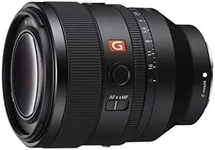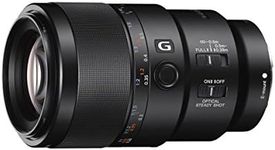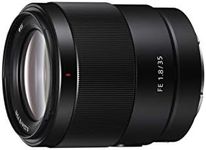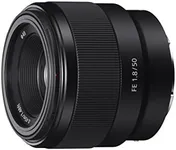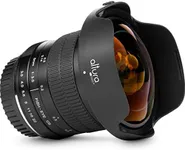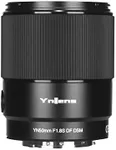Buying Guide for the Best Sony Mirrorless Lenses
Choosing the right Sony mirrorless lens can significantly enhance your photography experience. The right lens will depend on what you plan to shoot, your skill level, and your personal preferences. Understanding the key specifications of lenses will help you make an informed decision that best suits your needs.Focal LengthFocal length is the distance between the lens and the image sensor when the subject is in focus, usually stated in millimeters (mm). It determines the field of view and how much of the scene will be captured. Wide-angle lenses (10-35mm) are great for landscapes and architecture, standard lenses (35-70mm) are versatile for everyday use, and telephoto lenses (70mm and above) are ideal for wildlife and sports photography. Choose a focal length based on the type of photography you are interested in.
ApertureAperture refers to the size of the lens opening that allows light to enter the camera. It is expressed in f-numbers (e.g., f/1.8, f/2.8). A lower f-number means a larger aperture, which allows more light and is better for low-light conditions and achieving a shallow depth of field (blurry background). Higher f-numbers mean a smaller aperture, suitable for well-lit conditions and greater depth of field. If you often shoot in low light or want to create a bokeh effect, go for lenses with a lower f-number.
Image StabilizationImage stabilization helps reduce blur caused by camera shake, especially useful in low-light conditions or when using a telephoto lens. Some lenses come with built-in stabilization, which can be beneficial if your camera body does not have this feature. If you frequently shoot handheld or in challenging lighting conditions, consider a lens with image stabilization.
AutofocusAutofocus (AF) is the lens's ability to automatically focus on the subject. Fast and accurate autofocus is crucial for capturing sharp images, especially in action or wildlife photography. Lenses with advanced AF systems are better for tracking moving subjects. If you shoot fast-moving subjects or need quick focus adjustments, prioritize lenses with superior autofocus performance.
Lens MountThe lens mount is the interface between the camera body and the lens. Sony mirrorless cameras typically use the E-mount system. Ensure that the lens you choose is compatible with your camera's mount. If you have a full-frame camera, look for FE lenses, while APS-C cameras can use both E and FE lenses. Compatibility is key to ensuring the lens works seamlessly with your camera.
Build QualityBuild quality refers to the materials and construction of the lens. Lenses with metal bodies and weather-sealing are more durable and can withstand harsh conditions. If you often shoot outdoors or in challenging environments, investing in a lens with robust build quality is advisable. For casual or indoor photography, standard build quality may suffice.
Weight and SizeThe weight and size of the lens can affect your shooting experience, especially if you plan to carry your camera for extended periods. Compact and lightweight lenses are easier to handle and more portable, making them ideal for travel and street photography. Larger and heavier lenses may offer better performance but can be cumbersome. Consider your comfort and shooting style when choosing the size and weight of the lens.


